Going down the Colorado River through the Grand Canyon is an incredible experience that should not be missed.
Ride the Colorado River rapids. See the walls of the canyon rise or fall around you. Explore hidden caves, enormous caverns, modern tunnels and rarely seen views. Visit ancient Native American cultural sites. Hike to beautiful waterfalls, verdant fern gardens and hidden springs. Sleep under the stars on sandy beaches surrounded by the immense canyon walls.
All this and more awaits you on Grand Canyon river trips.
🛏️TOP HOTEL PICK: Check availability now
🚘FIND THE CHEAPEST CAR RENTAL: Search Discover Cars for the best deals
✈️FIND THE CHEAPEST FLIGHTS: Search Skyscanner for the best deals
🧳GET TRAVEL INSURANCE: Get insured with Travelex before you go
📱TAKE AN AUDIO TOUR: Buy an audio tour now
Table of Contents
Guide to White Water Rafting In the Grand Canyon
Rafting the Grand Canyon is a once in a lifetime experience, but there a few things to consider when looking for a Grand Canyon white water rafting trip.
The Types of Rafts/ Boat
There are several different types of craft to choose from when white water rafting Grand Canyon.
Motorized Raft
These are large ponton rafts with (very quiet) motors. They are around 35 feet long, which is much larger than regular rafts, so they are more stable and you feel the rapids much less. They have seats with backs, so are also more comfortable. However, if you are looking for a typical white water rafting experience, this is not for you, as it is much less interactive. Passengers sit there and enjoy the views, but are not involved in paddling, steering or bailing.
If you are doing a one-day Grand Canyon white water rafting experience, this is the only option.
They usually seat around 14 people.
⭐ Age requirement: 8 or older
⭐ Pros: Proceeds more quickly through the canyon, getting you to major points of interest more quickly; quicker, so trips are cheaper; smoother and more comfortable
⭐ Cons: Less immersive and adventurous than a regular raft; you have less time in the canyon to soak it all in; you feel the rapids less (can be a good thing, depending on your point of view)
⭐ Best for: Families with younger children; inexperienced rafters; people who don’t want to paddle; people who have less time available
Paddle Raft
This is your regular raft that you think if when you think of whitewater rafting. Each inflatable raft holds 6-8 passengers, and you will need to paddle the boat. One of the Grand Canyon river guides is at the back steering, but the passengers are the ones propelling the raft forward. Going through the rapids means frantically digging your paddles into the water, as you need to be faster than the water flowing so that the guide has control over the raft.
Some of the Grand Canyon whitewater rapids are pretty big, so this is definitely for those with a sense of adventure. Unlike some rivers though, there are also long flat sections between the rapids. In a paddle raft, passengers still need to row these sections, and this can be tiring if you aren’t used to it.
Only a few Grand Canyon rafting outfitters offer paddle rafting trips.
⭐ Age requirement: 12 or older
⭐ Pros: Highly interactive and the most adventurous of the options as you ride the rapids
⭐ Cons: There are long sections of the river that are calm flat water. This requires constant paddling, and can be tiring if you’re not used to it; takes longer than motorized rafts; some of the larger rapids can be scary if you’re not used to rafting
⭐ Best for: People with enough time and a sense of adventure; people with some rafting experience (recommended, but not required)
Oar-Powered Raft
With this option, the guide does all the rowing and passengers just have to sit in the raft (and hold one in the rapids). You feel the rapids just as you would if you were doing a regular white water rafting trip, but don’t have to paddle at all. The rafts are much smaller than motorized rafts, with just six people per raft.
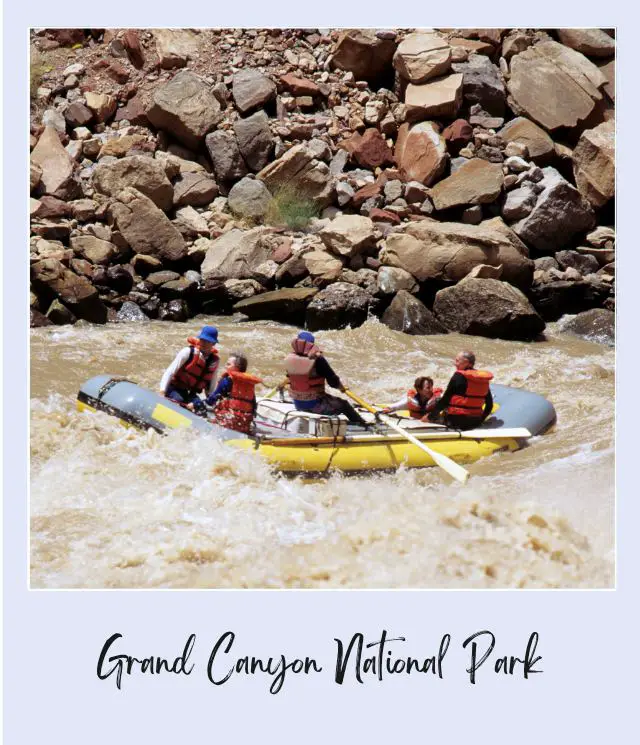
⭐ Age requirement: 10 or 12 or older
⭐ Pros: You don’t have to paddle in the calm sections, so can relax and enjoy the scenery; if you want to really feel the rapids and the all the excitement that goes with that, you will do that much more than on a motorized raft
⭐ Cons: It is roughly twice as long as a motorized raft trip; it is rougher than a motorized rafting trip; you don’t get to paddle yourself in the rapids
⭐ Best for: People who have time, and want a rafting experience without having to paddle themselves
Hybrid Raft
This is a combination of both oar and paddle rafts. Some trips have a mix of rafts that are oar-powered (rowed by a guide) and regular whitewater rafts where the passengers do the rowing. This means that passengers can alternate between therm. There are usually 4 oar-powered rafts and 1 paddle raft. Only a hand-full of outfitters offer this option.
⭐ Age requirement: 12 or older
⭐ Pros: You can paddle through some of the rapids, but then not have to paddle all of the calm sections; you get more time in the canyon than a motorized raft
⭐ Cons: You don’t get to paddle all of the rapids; takes longer (and is more expensive) than motorized rafts
⭐ Best for: People who want to paddle themselves, but don’t want to do it for the entire trip (either because they aren’t very experienced or just want a break sometimes during the calm sections.
Wooden Dory
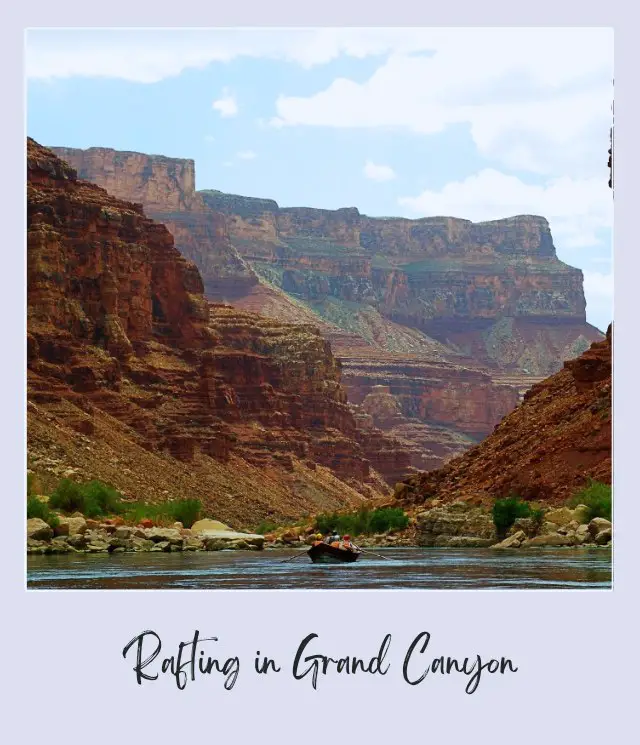
A guide does all the paddling for you, so you can relax and enjoy the canyon on calm water. When riding the rapids, you will still have a very immersive experience as you need to frantically bail all of the water that is flooding into the solid wooden boat. It’s a rougher ride than an inflatable ride, as the boat tips and rocks through the rapids without any flexibility.
They are a little faster than oar-powered rafts, but obviously slower than motorized rafts. They are also much less common than the other options; only a few Grand Canyon rafting companies offer these trips. There are usually four people per boat, plus the guide.
John Wesley Powell was the first person (that we are aware of) who traversed the length of the Grand Canyon on the Colorado River. He did it in a small wooden boat called a dory. There are a few trips offered that reenact Powell’s trip by using dories instead of inflatable rafts.
⭐ Age requirement: 10 or 12 or older
⭐ Pros: Interactive in the rapids, but you can relax in the calm sections of the river
⭐ Cons: Rougher on the rapids than inflatable rafts; slower than motorized rafts (can be a Pro); more expensive than motorized rafts
⭐ Best for: People looking for an adventure and who have enough time; people who want a more historically authentic experience (or something a bit different from – and more unique than – the usual whitewater rafting experience)
Subscribe to daily national parks planning tips, travel inspiration and trip ideas and get instant access to the free PDF of this
Guide to White Water Rafting in the Grand Canyon
The Sections of the Canyon
The canyon is divided into several sections:
The Upper Canyon (Lee’s Ferry – Phantom Ranch)
When you ride through the Upper Canyon, you slowly see the walls of the canyon rise around you as you get deeper and deeper in. Soon, identifiable layers of rock that were right at water level, so close you could almost touch them, are thousands of feet above you, as the canyon gets deeper and deeper. It helps give you an intimate connection to the canyon.
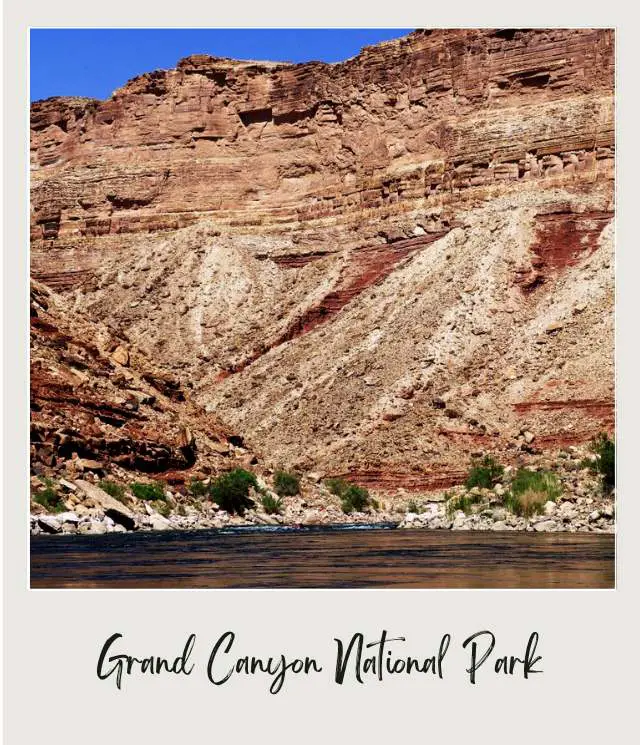
⭐ Start/ Finish: Lake Mead (River Mile 0) to Phantom Ranch (Pipe Creek or Boat Beach) (River Mile 88).
⭐ To know: Hike out at end (on Bright Angel Trail to South Rim)
⭐ Rapids: 19 major rapids rated 5 or above (on a 1-10 rating scale), including House Rock, Unkar, Hance, Sockdolager, Grapevine and Zoroaster
⭐ Highlights: Hike into North Canyon, hike into Saddle Canyon, Redwall Cavern, Nankoweap Anasazi Granaries, Vasey’s Paradise, floating down the aqua blue Little Colorado River
This section of the main Canyon is generally considered more varied and beautiful than the lower section.
The Lower Canyon (Phantom Ranch – Lake Mead)
This is the deepest section of the canyon and has the biggest rapids. You start in the middle of the canyon and slowly see the walls get smaller and smaller. Layers that started out high above you end up beside you.
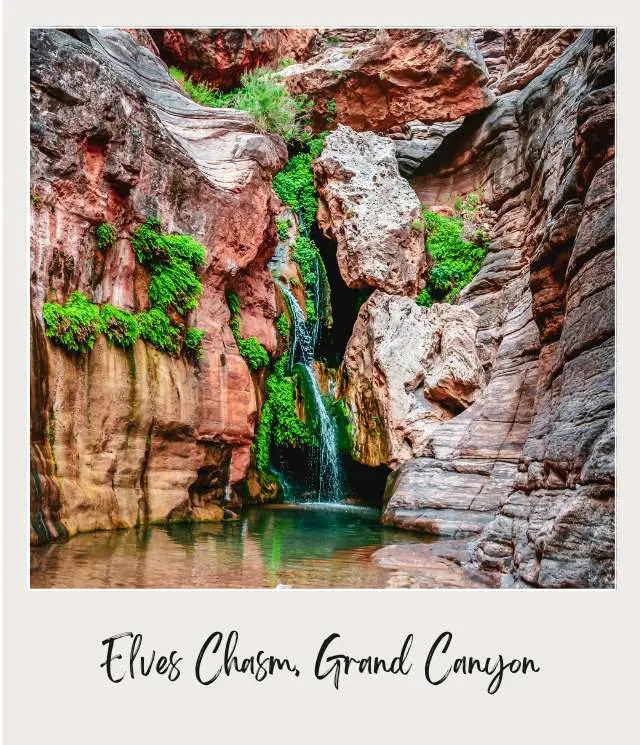
There are three different places you can exit this section, which obviously affects the length of your trip.
⭐ Start/ Finish: Phantom Ranch (Pipe Creek or Boat Beach) (River Mile 88) to Whitmore Wash or Diamond Creek or Lake Mead / Pearce Ferry
⭐ To know: Hike in at start (From South Rim on Bright Angel Trail)
⭐ Rapids: 19 major rapids to Whitmore Wash | 23 rapids to Diamond Creek | 28 rapids to Lake Mead. Major rapids are rated 5 or above (on the 1-10 rating scale used on Grand Canyon – which is different from the world standard of I-VI). Famous rapids in this section of the canyon include Lava Falls (possibly North America’s most famous big drop) and Crystal Rapid
⭐ Highlights: Hike above the 100-foot Deer Creek Falls, hike to where Thunder River gushes from a rock wall high above the river, fern and moss garden at Elves Chasm, limestone chutes in Matkatamiba Canyon, swimming in the turquoise Havasu Creek pools, riding through Granite Narrows (the narrowest part of the canyon).
Full Canyon (Lee’s Ferry – Lake Mead)
If you have the time, a non-motorized raft gives you more time to really soak in the whole canyon experience. A motorized raft does give you a chance to travel the whole length of the canyon more quickly. You will also often have a little more time for side trips since you can travel along the river more quickly.
Western Canyon
This is the western-most portion of the Lower Canyon. It is closer to Las Vegas and there are several places you can enter/ exit the river, so short rafting trips in the Grand Canyon are possible. There are two main options – shorter multi-day (typically 3-5 days) trips and one-day trips.
Multi-day Western Canyon Trips (Whitmore Wash – Lake Mead)
Western Canyon rafting tours take place in the Westernmost section of the Colorado River. They typically start with a scenic flight from Las Vegas to Bar 10 Ranch. This is a working ranch, and you can see ranch demonstrations, go horseback riding, ATVing, etc. before taking a helicopter to Whitmore Wash to start the rafting trip.
⭐ Start/ Finish: Whitmore Wash (River Mile 188) to Lake Mead (River Mile 280)
⭐ To know: Helicopter flight in. The last section is calm water and typically via jet boat
⭐ Rapids: 9 major rapids rated 5 or above (on a 1-10 rating scale) + 4 lower intensity rapids
⭐ Highlights: 2 side hikes
One-Day Western Canyon Trips (Diamond Creek – Lake Mead)
One-day rafting the Grand Canyon trips start and end with a two-hour shuttle ride from/ to Peach Springs. They enter the Colorado River at Diamond Creek and take out at Quartermaster Canyon at lunch time with a helicopter ride out, or involve an afternoon on calm water to Lake Mead. They are all in motorized rafts.
This section of the canyon does not have the biggest rapids or the most interesting side trips. Nor does it go through the tallest part of the canyon. But, if you only have a day, it is a super fun taster, and a great day out. There is a short optional hike to the picturesque Travertine Falls included.
⭐ Minimum Age: 8 years
⭐ Start/ Finish: Diamond Creek (River Mile 224) to Quartermaster Canyon (River Mile 261) or Lake Mead (River Mile 280)
⭐ To know: Finish at Quartermaster Canyon involves a 6-7-minute helicopter ride. This includes a visit to the Skywalk. If you stay until Lake Mead, the last section after lunch is calm water (which gives you a chance to dry off) and you can’t visit Skywalk.
⭐ Rapids: 9 major rapids rated 5 or above (on a 1-10 rating scale) + 4 lower intensity rapids
⭐ Highlights: Hike to Travertine Falls
There are two options for one-day Grand Canyon river tours
1. Grand Canyon rafting tours to/ from Las Vegas
This includes pick up and drop off from your hotel in Las Vegas. Be warned – it’s a long day with a 4:00am pickup and 8:00pm drop off! However, if you are staying in Vegas and want to add this Grand Canyon experience to your vacation easily, this is a great option.
➡️ Book a one-day river rafting Grand Canyon trip from Las Vegas here
2. Grand Canyon raft trips from the Peach Springs
If you have a car, this makes for a shorter day. You can stay in Peach Springs the nights before and of your trip and then head to the South Rim of Grand Canyon, to Vegas or somewhere else on your Southwest road trip. This makes the most sense if you aren’t based fully in Las Vegas. There is a two-hour transfer from Peach Springs to the Colorado River and another two hours back at the end of the day.
➡️ Book a one-day Colorado River rafting in Grand Canyon trip from Peach Springs here
Horseshoe Bend Section (Glen Canyon Dam – Lee’s Ferry)
There is one more section of the canyon that you can raft through. The eastern section is usually run by different companies. In fact, it ends at River Mile 0 (Lee’s Ferry). This a short five-mile section of the canyon and the trips are half day trips.
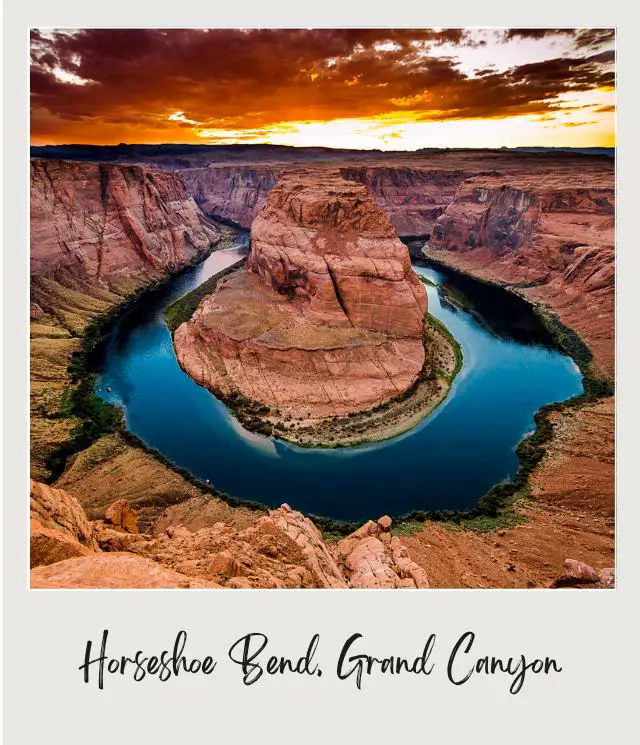
The trip, which is completely flat water (there are no Grand Canyon river rapids in this section) starts at Glen Canyon (after a bus transfer from Page), passes Petroglyph Beach and floats around Horseshoe Bend. It ends at Lee’s Ferry, which is the starting point for trip through the Upper Canyon. The half-day trip ends with a bus trip back past Vermillion Cliffs to Page.
⭐ Minimum Age: 4 years
⭐ Start/ Finish: Glen Canyon Dam to Lee’s Ferry (River Mile 0)
⭐ To know: This is a Grand Canyon float trip, not a whitewater rafting trip
⭐ Rapids: None
⭐ Highlights: Glen Canyon Dam, Petroglyph Beach, Horseshoe Bend, Lee’s Ferry, Vermillion Cliffs
At a Glance: Places that Grand Canyon river rafting trips start/end
Glen Canyon Dam (River Mile -15)
⭐ Start of ½ day Horsehoe Bend trip
Lee’s Ferry (River Mile 0)
⭐ End of ½ day Horsehoe Bend trip
⭐ Start of Upper Canyon and Full Canyon trips
Phantom Ranch (River Mile 88) / Pipe Creek (River Mile 88)
⭐ End of Upper Canyon trip. Hike Bright Angel Trail to South Rim/ Grand Canyon Village
⭐ Start of Lower Canyon trip. Hike Bright Angel Trail from South Rim/ Grand Canyon Village
Whitmore Wash (River Mile 188)
⭐ One possible end to Lower Canyon or Full Canyon trips. Helicopter to Bar 10 Ranch then charter plane to Las Vegas or your starting point.
⭐ Start of Western section (multi-day). Scenic flight from Las Vegas to Bar 10 Ranch then helicopter.
Diamond Creek (River Mile 224)
⭐ One possible end to Lower Canyon or Full Canyon trips. Coach to Flagstaff airport or further on to Las Vegas.
⭐ Start of one-day trip (after 2-hour shuttle from Peach Springs).
Quartermaster Canyon (River Mile 261)
⭐ One possible end to one-day trip. Helicopter + optional visit to Skywalk then 2-hour shuttle to Peach Springs.
Lake Mead / Pearce Ferry (River Mile 280)
⭐ One possible end to Lower Canyon or Full Canyon trips. Usually, you leave your raft around river mile 240 and take a jet boat ride to the end, then a coach to Las Vegas or your starting point.
⭐ One possible end to one-day trip. The final section after lunch is calm water. Then a 2-hour shuttle to Peach Springs.
⭐ End of Western section. Coach to Las Vegas or your starting point.
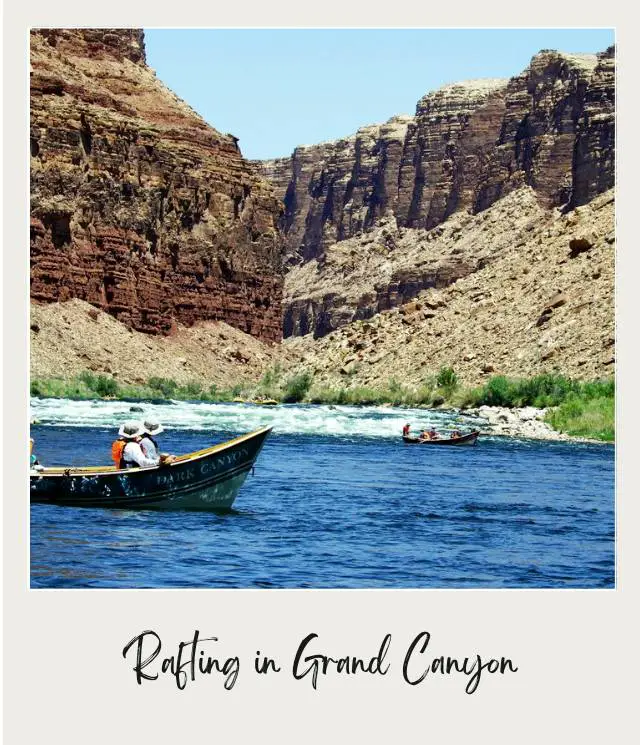
➡️ Read More: How to Get to Grand Canyon National Park
Length of Time
How long white water rafting trips in Grand Canyon take depends on the type of craft and the section of the canyon that you go through.
How long does it take to raft the entire Grand Canyon? It usually takes between 6 and 18 days to travel the entire length of the canyon (Upper and Lower Canyons). There is some variation between outfitters and types of raft, but in general
⭐ A motorized raft takes 6-8 days
⭐ A non-motorized raft/ boat (paddle, oar, hybrid or dory) takes 12-18 days
➡️ See below for more details on time and price for each section.
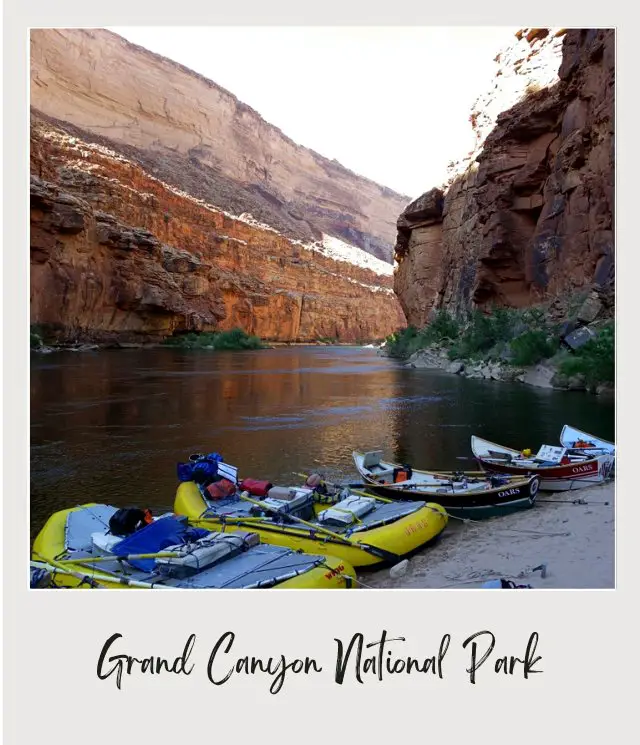
How Much is White Water Rafting in the Grand Canyon?
Grand Canyon white water rafting prices depend on the type of raft or boat, the length of your trip / which section of the canyon you go through, and the outfitter.
Longer trips cost more, as they involve more staff time and more food, etc. Because motorized rafts are quicker (and have more people on them), that means they are also cheaper. Dories tend to be the most expensive.
Some outfitters like Oars provide more extras, maybe better food and have a reputation of excellence, so they tend be more expensive. Other more budget operators will be less frills, and therefore a bit cheaper.
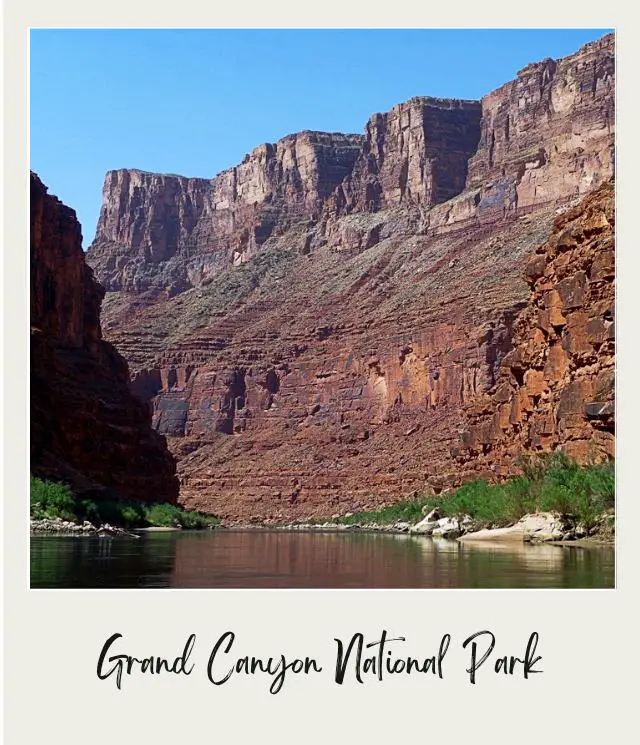
Approximate times and prices for rafting in Grand Canyon
- Upper Canyon
- Motorized: 4 days | $1,500
- Non-motorized: 6-8 days | $3,100 – $3.500
- Lower Canyon
- Motorized: 4 days | $1,800-$2,000
- Non-motorized:
- 7-8 days to Whitmore Wash | $4,500 – $5,000
- 10-12 days to Diamond Creek/ Lake Mead | $5,000 – $5,300
- Full Canyon
- Motorized:
- 7 days to Whitmore Wash | $3,300
- 8-9 days to Diamond Creek/ Lake Mead | $3,000 – $3,300
- Non-motorized:
- 12-14days to Whitmore Wash $5,700 – $6,300
- 15-18 days to Diamond Creek/ Lake Mead | $6,100 – $6,700
- Motorized:
- West Canyon
- Non-motorized: 5 days | $2,800 – $3,000
All times and prices are approximate and vary between operators. This is given here a general guide only. Please check with the actual operators for exact times and prices.
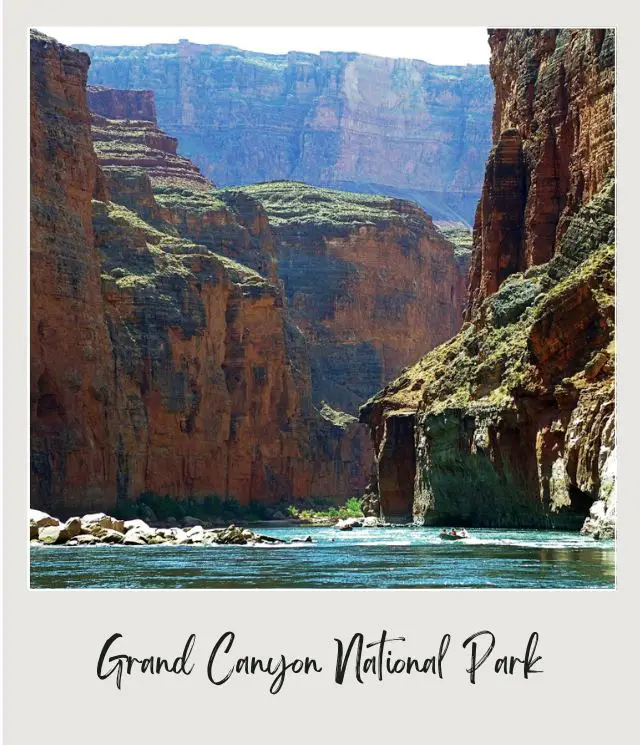
What is the best time to raft Grand Canyon?
Unlike most rivers that are fuller in spring with the snowmelt and smaller by the end of summer, the flow of the Colorado River is controlled by the Glen Canyon Dam upriver, so it tends to be fairly consistent throughout the year.
The rafting season is typically from April to October.
The Colorado River is surprisingly cold, which can be refreshing in the hotter summer months and downright chilly in the cooler spring and fall months. Summer is definitely more crowded.
From July to early September is monsoon season and occasionally intense rains can wash out the road between Peach Springs and the river, which can mean that the one-day rafting trips in the Grand Canyon can be cancelled.
In general, spring (April-May) and fall (September-October) are the best times of year for raft trips in Grand Canyon.
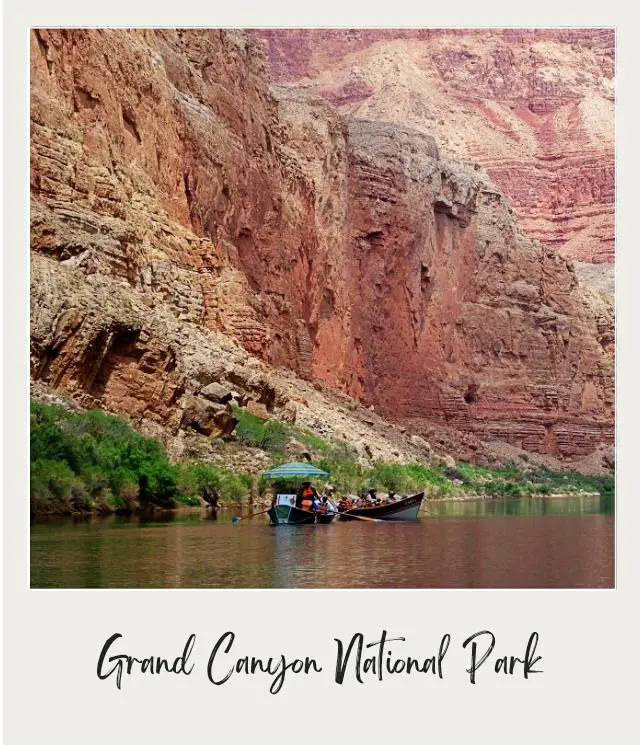
Subscribe to daily national parks planning tips, travel inspiration and trip ideas and get instant access to the free PDF of this
Guide to White Water Rafting in the Grand Canyon
Upper Canyon Colorado River Rafting Description
We chose to take a dory because:
✅ a dory is wood, so it is not flexible, so you feel every part of every rapid, making riding the rapids more thrilling
✅ this is how the original explorers did it and there is a romance to following in their footsteps more closely
✅ one of the crew actually does the rowing (we needed to bail the water out as we went through each of the rapids, though), so it is actually less strenuous.
We chose the Upper Canyon because:
✅ it was a bit shorter than the Lower Canyon, giving us more time at the rim
✅ the hike on the Bright Angel Trail was uphill, and I prefer hiking up rather than down because, although it requires more effort, it’s easier on the knees
✅ I wanted to see the canyon grow and see it get bigger, rather than entering at the deepest point
However, keep in mind that the Lower Canyon has the biggest rapids and is actually the deepest part of the canyon.
Day One of Rafting in the Grand Canyon
We flew into Flagstaff the day before (➡️ see Best Airports Near Grand Canyon National Park).
We are picked up at 7:00am for the trip to Lee’s Ferry, where the boats put in. The countryside quickly changes from pine forest to desert and soon enough we see some mesas appear, which really evoke the American South West.

I was expecting Lee’s Ferry to be flat, but actually the canyon has already started and there are some short sandstone cliffs. We board our dories; each of the four wooden boats has four passengers plus the crew member who is doing the rowing.
We go through three rapids, including Badger Rapids and Soap Creek. They aren’t that big, but are fun nonetheless as we bounce around, bailing frantically. The canyon gets deeper as the day progresses, and the layers of rock start to rise high around us. It’s beautiful and awe-inspiring.
We camp for the night on a beach on a narrow stretch of the river. Directly opposite is a sheer wall of orange sandstone. We can hear the bleating of longhorn sheep, but can’t see them. It’s cooled down and is very pleasant; a gentle breeze is blowing.
We pitch our tent and bathe in the freezing cold river. After a dinner prepared by the crew, we are in bed by 8:30 pm, exhausted after a day in the sun. We are alone surrounded by scrub and the canyon walls.
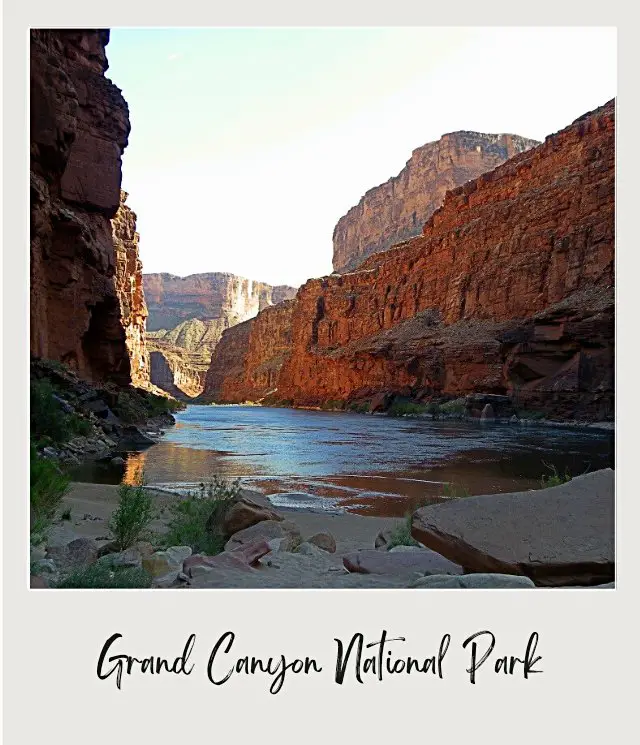
Day Two of Rafting in the Grand Canyon
We wake up at 6:00am, excited for the day ahead, and after breakfast, set off about 9:00am. It is not long before we face the first rapids of the day.
House Rock Rapid is bigger than anything we went through yesterday and we have to wear helmets. The crew stop to check it out so they know exactly how to navigate safely through it. We head into it, bailing like crazy with water swirling in front of us and crashing into the boat. It’s good fun and over too soon.

I sit back and relax, soaking everything in. The canyon is high above us now.
After another couple of rapids, we pull up on a beach at North Canyon, where we get out for our first hike of the trip. The three-mile round-trip hike into North Canyon is spectacular, with incredible views of both the main Grand Canyon and the side North Canyon.
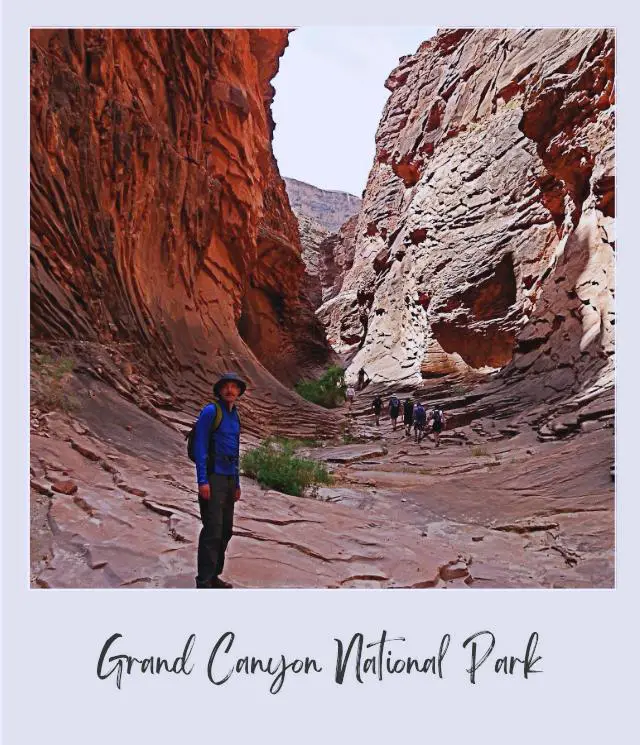
The scale is overwhelming – we are tiny blips on the landscape. The hike ends in a ¾ tube that has been scoured out by water gushing during flash floods, with a tiny pool remaining.

Nature never fails to amaze me – this hike is amazing.

After lunch, we run rapids virtually every mile, including 24.5 Mile Rapid, 25 Mile Rapid and The Roaring 20’s. The cliffs in this part of the canyon are red and the views all around us are truly spectacular.
We set up camp for the night on another gorgeous sandy beach and are again in bed just after dark.
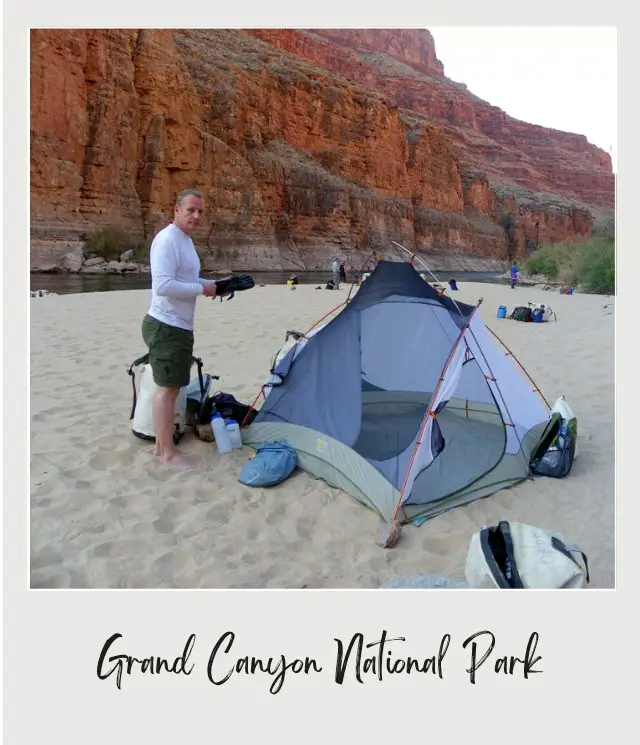
Day Three of Rafting in the Grand Canyon
We are on the river by 8:30am. There are no big rapids today, so a nice gentle day of rolling down the river, a new breathtaking scene around every bend. The canyon is getting deeper and deeper and we often can’t see the rim, which is set back from the cliffs we pass under.
The cliffs are mainly red here, but at one spot a large slab of the cliff fell off a year or so ago and the exposed cliff is white. This layer of the canyon is actually limestone at this level of the river, but is dyed red by oxides draining down from the sandstone above (see below for description of the layers).
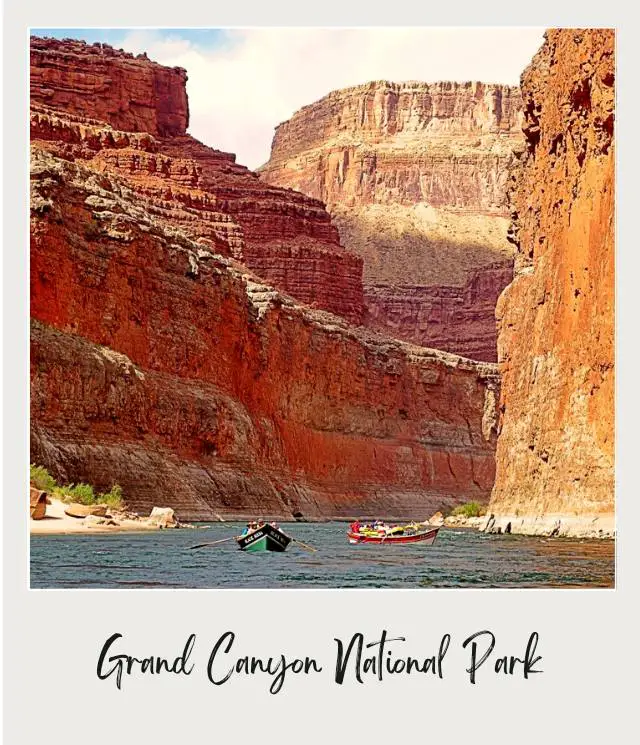
I become an expert in canyon geology for the next few days – and then forget most of it soon after getting back home!
We pass Vasey’s Paradise, a small waterfall and stop at Redwall Cavern. This is an enormous cavern set deep into the canyon wall with a fine sandy beach.
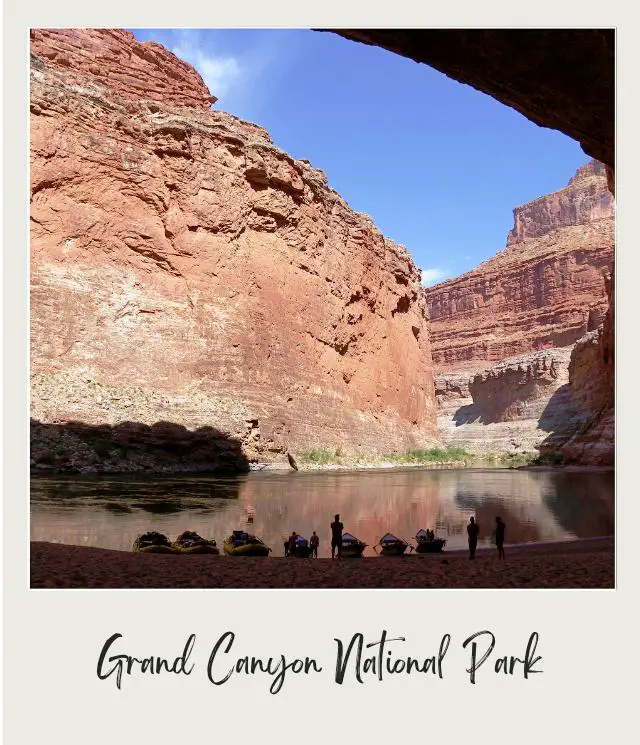
It is incredibly picturesque.
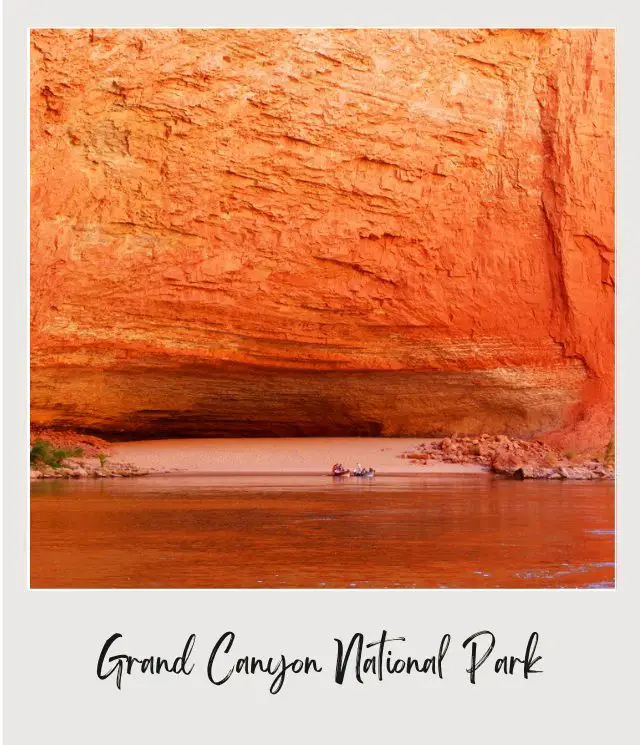
A little further down river, we have another stop. A short hike takes us up to a tunnel created in the canyon wall as part of the exploratory stages of the Marble Canyon Dam.
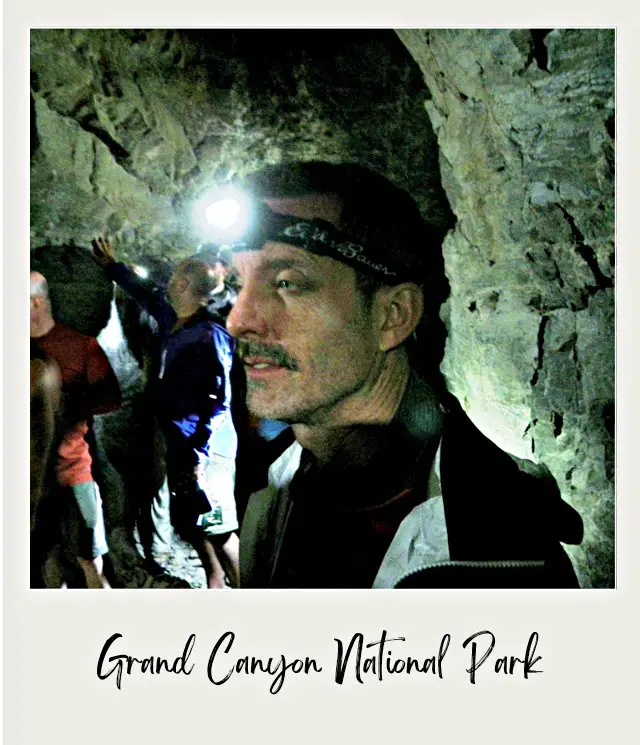
If the dam had been completed, this part of the Grand Canyon would have been under water. Fortunately, the project was cancelled after a huge public outcry. Sometimes common sense does prevail.
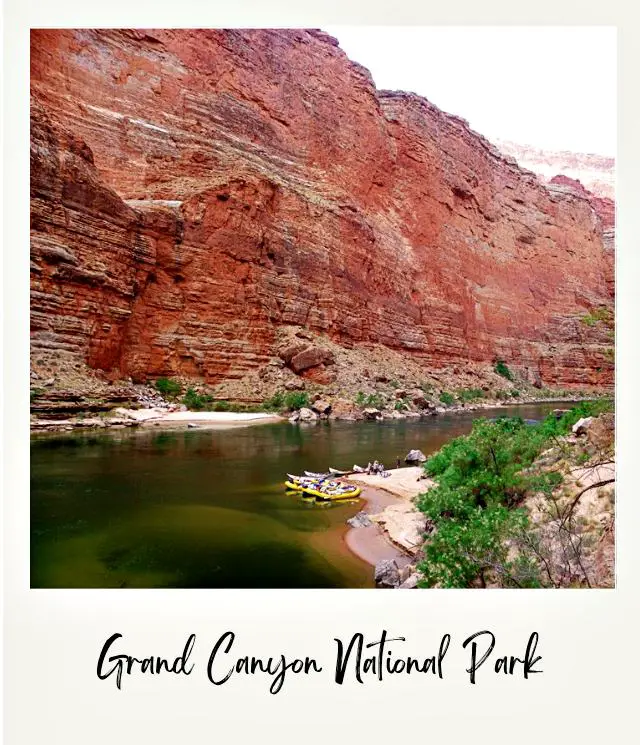
The long tunnel is more interesting for its place in history than for anything else, but it is interesting to see and learn about a new aspect to the canyon and its history.
Around 3:00pm, we reach Saddle Canyon, where we camp for the night on yet another gorgeous beach with breathtakingly beautiful views.
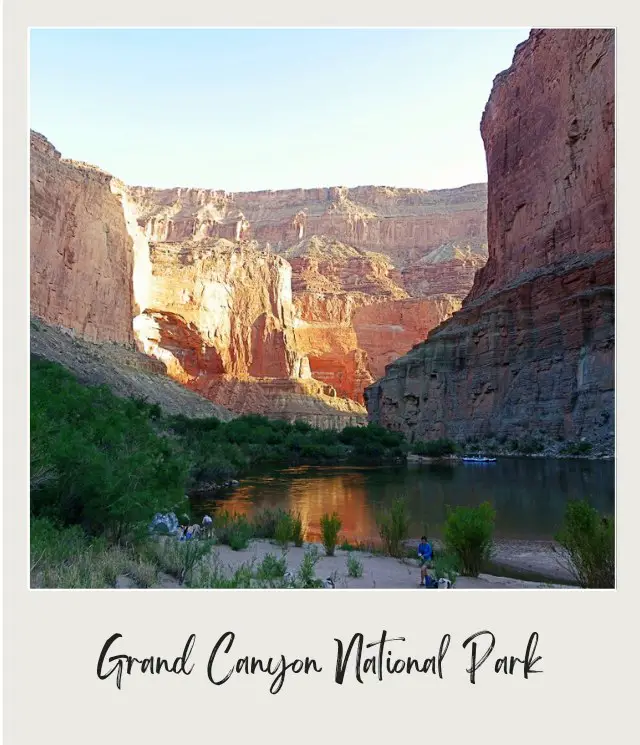
Day Four of Rafting in the Grand Canyon
We start the day with a hike up Saddle Canyon. The canyon is narrow, with sheer cliff walls towering overhead. Most of the hike is through lush vegetation that grows around a creek.
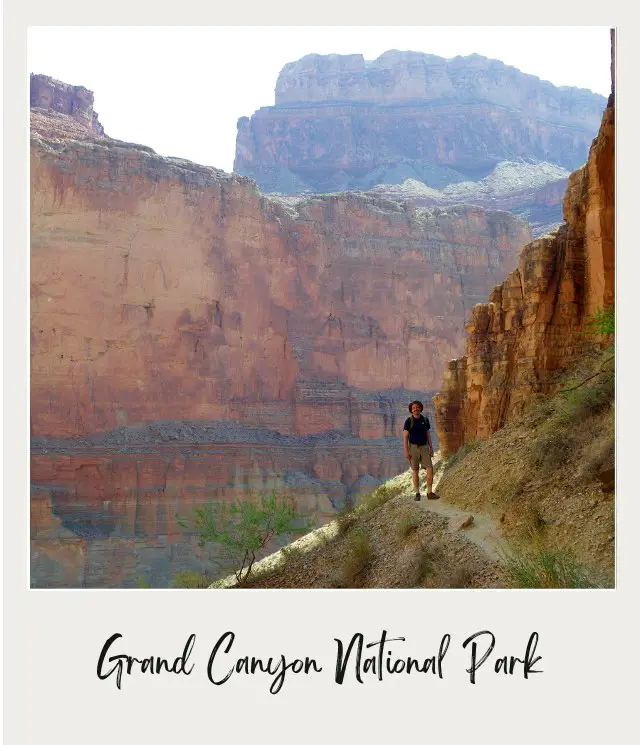
Near the end of the hike we change into wet shoes and hike through the creek and climb up a narrow crevice, helped by the crew, to a little rock waterfall where this part of the canyon narrows to an end.
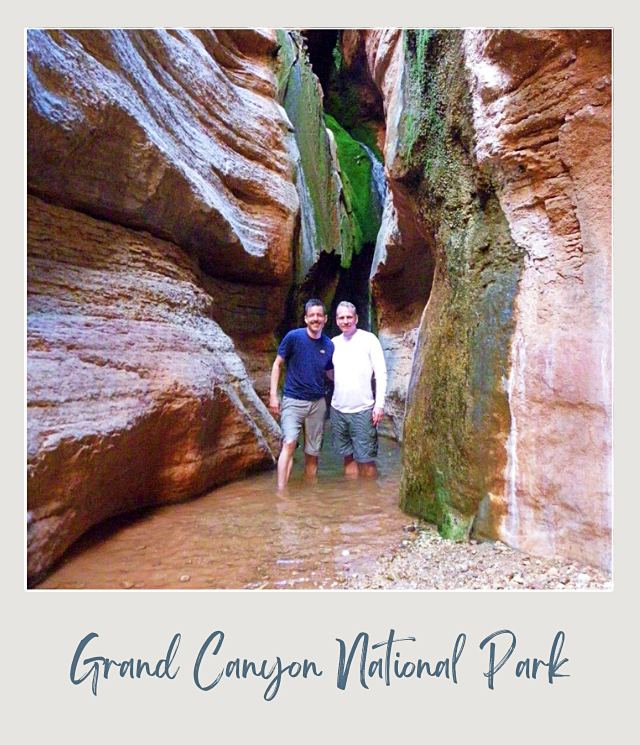
Back at the beach, we board the boats and head a little further down river.
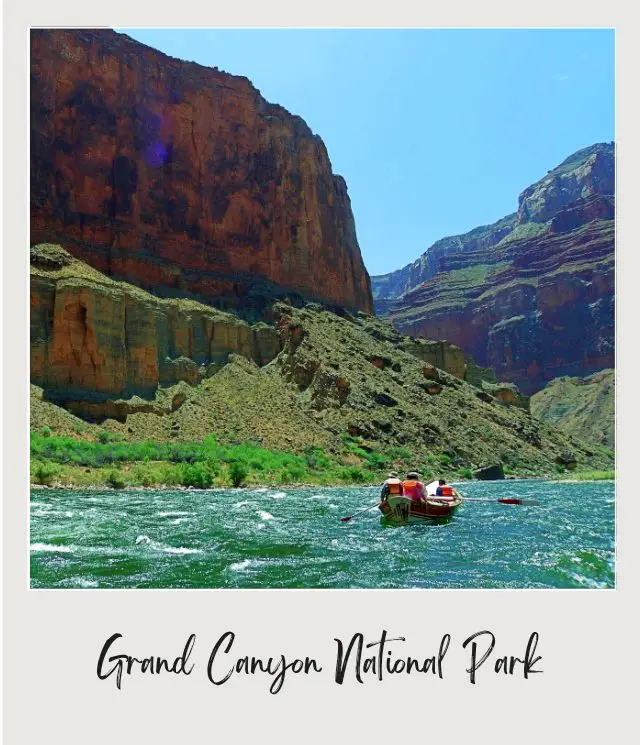
There are no major rapids in the morning.
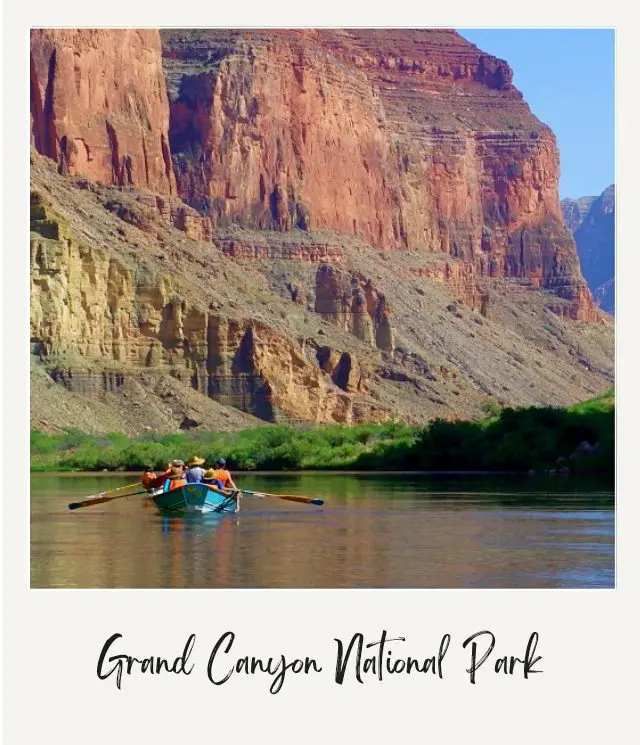
We stop at Nankoweap Granaries and have lunch on the beach before starting our second hike of the day. It’s a steep climb- the last part is basically straight up – but worth the effort.
At the top is an ancient native American granary – a bricked wall with windows that create a cave-like storage area. The area at the top is a row of steep bleachers, with a sheer drop far below, which is a little unnerving.

In addition to the ancient granary, the payoff for the climb up is the singular most amazing view of the entire trip (in my opinion) down the longest straight section of the canyon where the river meanders around sand banks. I take a million photos then sit and stare until it is time to go back down.
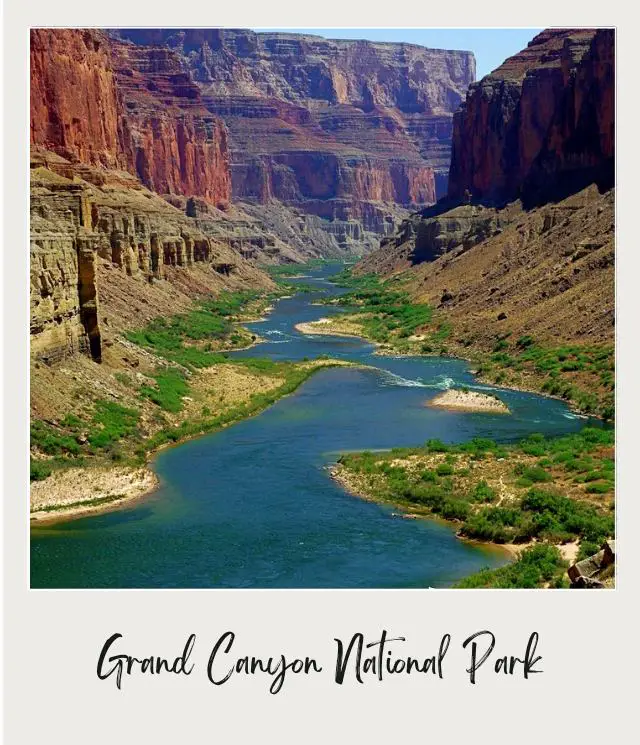
Back on the river, we roar down Kwagunt rapid and a few smaller ones as well. I ride on the bow for the small rapids. The front of the boat plunges and soars even in Class II rapids and it’s great fun.
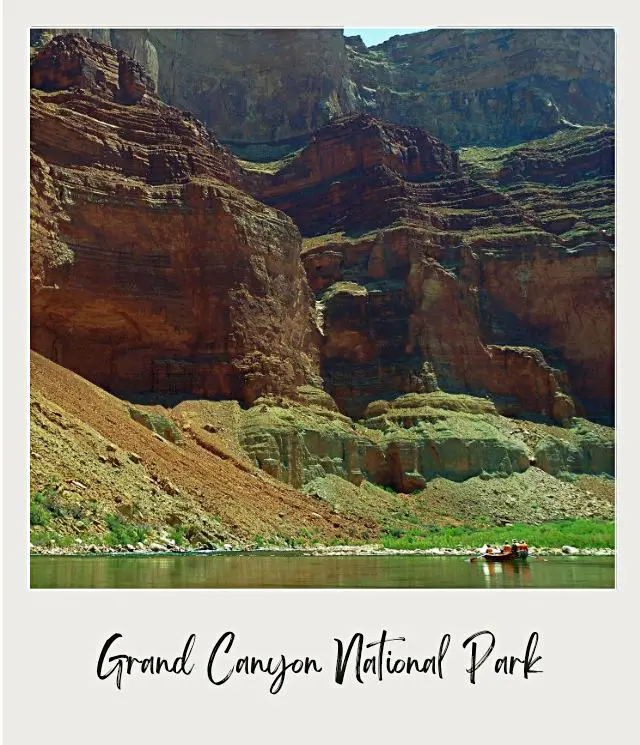
We camp in another breathtaking spot. It’s Kevin’s 50th birthday, and the guides bake him a chocolate cake in a Dutch oven and we all sing happy birthday. Such a great way to spend a birthday!

Day Five of Rafting in the Grand Canyon
We have a bit more of a leisurely start and only go a short way before we stop at the Little Colorado River. This side river is a vivid aqua blue due to its mineral content – and considerably warmer than the frigid Colorado River.
We walk about ¼ mile upstream and stopped by a mini rapid. We wear our life jackets like diapers and, buoyant, float down the rapids.

We stay for about an hour, having several goes.
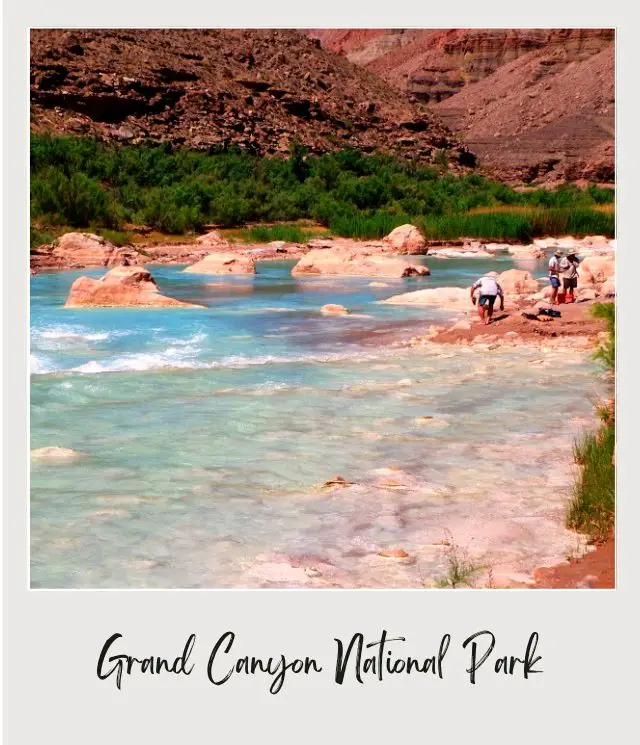
The rest of the day sees us go through more rapids, including Unkar and Nevilles – nothing too major – but I ride the bow again for a smaller rapid to mix things up.
I could do this for days more.
Day Six of Rafting in the Grand Canyon
We got through several big rapids, including Hance, Sockdolager and Grapevine. For Hance, the crew get out to survey the rapid before going down it. Huge waves crash over the front of our boat and we bail like crazy people, but we get through unscathed.

We arrive late morning at a hot beach just past a narrow bridge spanning the river. We debark, have lunch, put all our stuff back in our duffel bags, and then hike a dusty ½-mile to Phantom Ranch, which is a group of rustic cabins with a large central hall for dining/ shop/ reception/office.
We weigh our duffel bags to make sure they are light enough to be carried up and out of the canyon on a mule, so that all we have to carry when we hike out the next day is a small day pack with water, snacks and a camera.
We attend a free ranger talk on rattlesnakes and have a family style stew, cornbread and salad and salad for dinner, then early to bed in a dorm with other members of our rafting group in preparation for the next day’s early morning hike out of the canyon on the Bright Angel Trail. Read a complete guide to the Bright Angel Trail hike here.
When you get to the South Rim, there are plenty more things to do. Read my Top 30 Things To Do at Grand Canyon’s South Rim for loads of ideas.
The verdict: White water rafting in the Grand Canyon
I can’t imagine a better way to see the Grand Canyon. We hiked out and that was great. We spent several days at the rim and that was great. But being in the canyon, careening down rapids in a wooden boat like explorers and being dwarfed by the immense layered cliffs all around us was totally awesome!
Riding on the Colorado River through the Grand Canyon is likely to be the highlight of your trip (it was mine). But it’s not the only thing to do in Grand Canyon National Park.
Of course, you’ll want to see the South Rim, too. The river trip is easy – you’re along for the ride! But organizing your trip to the South Rim is more complicated.
Getting an idea of all there to see and do on the South Rim and coordinating seeing them all into an itinerary that actually makes sense is tricky. You want to see the views at the right time of day, include other activities, join them all together in a logical order, and manage all the logistics that makes them happen.
To help take away the overwhelm of planning a trip to the Grand Canyon, I’ve created several super detailed itineraries.
There are 1-, 2-, and 3- day options for the South Rim: all with detailed hour-by-hour schedules, including alternatives for different activity and fitness levels, plus trail maps and descriptions, driving instructions, important information, essential tips, and everything else you need to make the most of your time in Grand Canyon National Park. I also offer a more basic itinerary for the North Rim.
The layers of the Grand Canyon
One of the things I loved about going through the canyon was passing the different layers. At the start, the youngest stone in the canyon was all around us. As we continued down the river, that layer rose up and the layer directly beside us was older and different rock. It was really cool to pass through time and see familiar layers that we had passed directly by end up thousands of feet above us by the end.
Kaibab limestone – the youngest and therefore the topmost layer. In some places sandstone and shale also exits here (color is cream – greyish white)
Toroweap Foundation – a little darker than the Kaibab limestone, but similar material
Coconino sandstone (petrified sand dunes). A broad, light-colored cliff a few hundred meters below the rim (color is white – cream)
Hermit shale – siltstones, mudstones, fine grained sandstones. It is rich in iron that creates a red slope. It is soft, so it erodes, causing the layers above to fall in (color is deep rust colored red)
Supai Formation – shale with bits of limestone and capped with sandstone (color varies from red for shale to tan for the sandstone caps)
Redwall limestone – this is prominent because it forms a sheer cliff. (Color is a deep reddish color, but this is due to the iron oxides leaching out of the layers above and staining the face. Behind the red is dark brownish color.)
Temple Butte Limestone – this is most prominent in western end of the canyon. (Color is purplish in east and grey/ cream in the west)
Tonto group:
Muav limestone – thicker in the west (color is grey)
Bright Angel Shale – a broad flat area below the rim called the Tonto platform. it is much wider in the west (color is green to gray)
Tapeats Sandstone – dark brown
Precambrian basement rocks – there are various layers, which are tilted up rather than horizontal. Includes pinkish rock called Zoroaster Granite
Happy river running!
Additional Planning Resources for Grand Canyon National Park
⭐ Grand Canyon Guide
⭐ Grand Canyon South Rim Deluxe Itinerary
⭐ Grand Canyon North Rim Basic Itinerary
⭐ Planning A Trip to Grand Canyon National Park
⭐ How Long to Stay in Grand Canyon National Park
⭐ Best Things To Do In Grand Canyon (South Rim)
⭐ Best Grand Canyon Viewpoints
⭐ Top Tips for Visiting Grand Canyon National Park
⭐ Complete Guide To Hiking The Bright Angel Trail
⭐ How To Get To Grand Canyon National Park
⭐ The Best Airports Near The Grand Canyon
⭐ Reservations For Phantom Ranch, Grand Canyon
⭐ The Airport Nearest Grand Canyon National Park
⭐ Best Time to Visit Grand Canyon National Park
⭐ Visiting Grand Canyon National Park Throughout the Year
⭐ Best Books about the Grand Canyon
⭐ Vacation Rentals In and Near Grand Canyon National Park
⭐ Vacation rentals in Flagstaff
⭐ Vacation rentals in Sedona
⭐ 12 Fun Facts About the Grand Canyon
⭐ 5 Best Easy Hikes in Grand Canyon National Park
⭐ 15 Best Things to Do in Grand Canyon for Non Hikers
Do you have any stories of Grand Canyon ? I’d love to hear them. Join my private Facebook group National Parks Collectors and comment and let me know.
Subscribe to daily national parks planning tips, travel inspiration and trip ideas and get instant access to the free PDF of this
Guide to White Water Rafting in the Grand Canyon
If you liked this article, Pin it to your Grand Canyon and White Water Rafting boards!
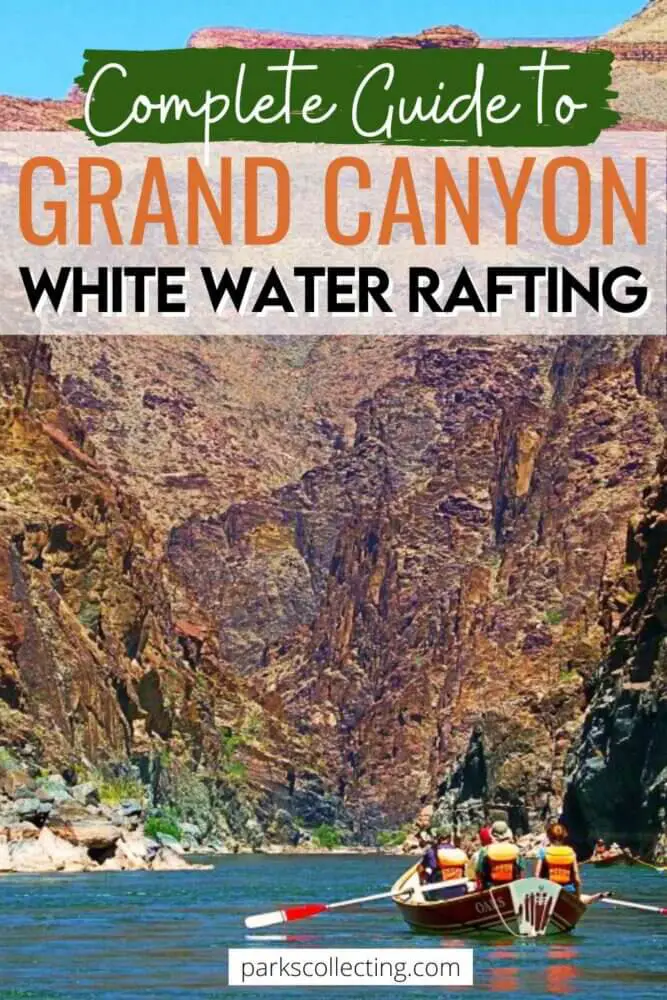

💡Are you just starting to think about taking a national parks trip? Get Inspiration
‼️ Are you looking for helpful tips for visiting US national parks? Read articles that share useful tips on a range of national-park related issues
💻 Are you starting to plan a trip to Grand Canyon National Park? Read my Guide to Grand Canyon National Park
📋 Do you want a ready-made super detailed plan for your trip to the Grand Canyon? Get a Deluxe 1 – 3-day South Rim Itinerary and Get a Basic 1-2-day North Rim Itinerary
🛏️ Are you looking for a place to stay near Grand Canyon National Park? Find a vacation rental near Grand Canyon National Park
💲 Are you ready to book your trip? Use these Planning and Booking Resources
📖 Do you want to read a book about Grand Canyon National Park? Check out my Recommended Reading List for Grand Canyon National Park
About the Author
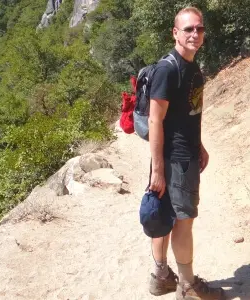
James Ian is a national park, camping and hiking expert.
He has dedicated his life to travel, visiting more than 80 countries, all 7 continents and most of the national parks in the United States. With over 35 years experience in the travel industry, James has worked on cruise ships, at resorts and hotels, and as a travel planner who’s helped hundreds of people plan successful trips to US national parks.
Based on his experience visiting our national parks multiple times, in-depth research and expertise as a travel planner, James has published detailed itineraries for many of the major national parks in the US. These itineraries, as well as in-depth park guides, and other resources will help you have your own incredible trip to US national parks without stress and hassle.
As a national park expert, James has contributed to many publications, including USA Today, Newsweek, Time Business News, Savoteur, Best Trip, and Wired.
I’m a member of the Amazon Services LLC Associates Program. As an Amazon Associate I earn from qualifying purchases.
